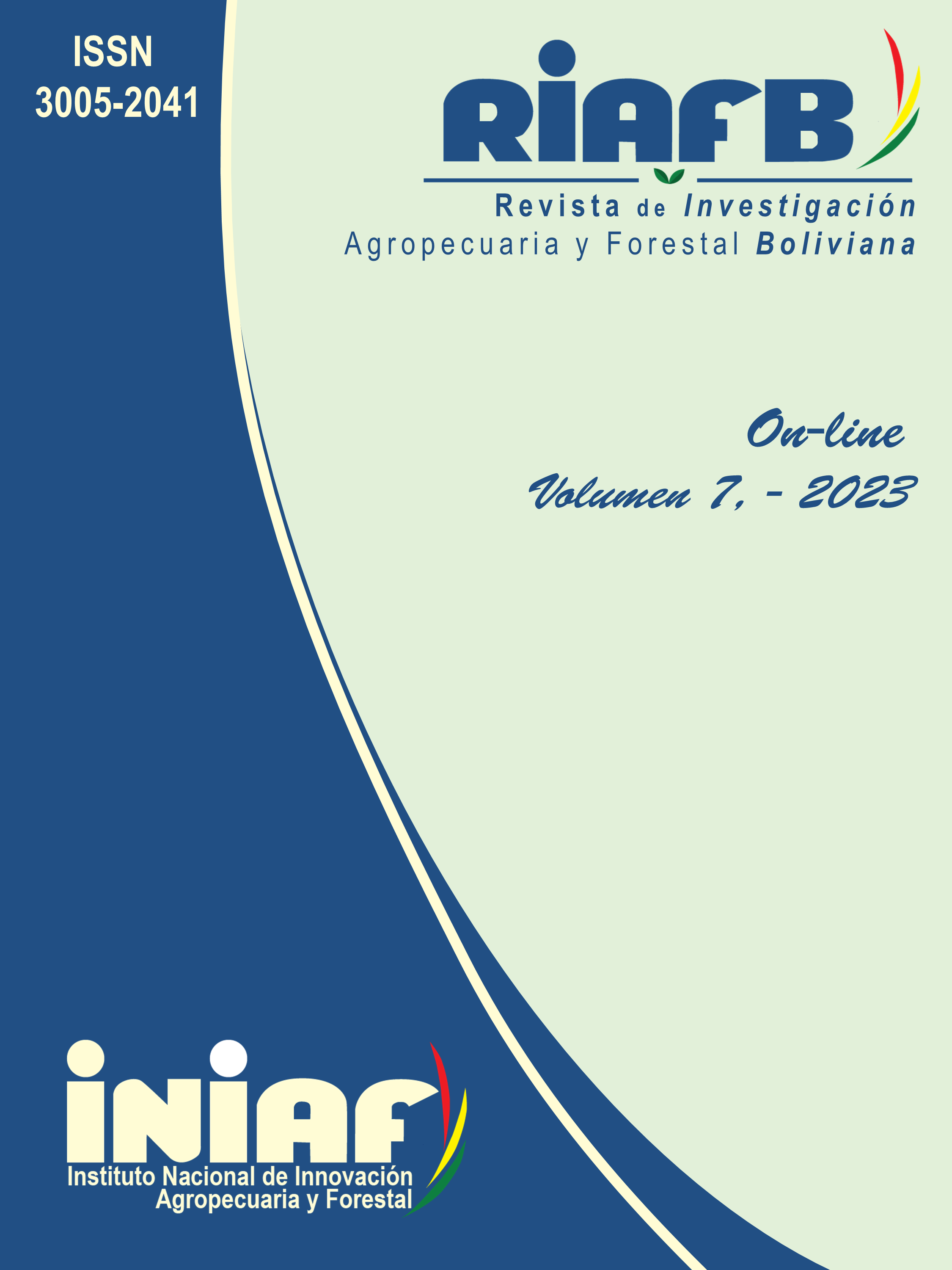Morphological Characterization of Existing Cucurbitaceas Germplasm in the National Institute of Agricultural and Forestry Innovation
Keywords:
Morphological characterization, diversity, C. fisifolia, C. maximum, C. pepo, C. moschata, L. siceraria, C. melo, Germplasm bank of BoliviaAbstract
The aim of this study was to characterize 30 accessions from the Cucurbitaceae family, sourced from the National Germplasm Bank of Bolivia - Vegetables, a division of the National Institute of Agricultural and Forestry Innovation (INIAF). The research was conducted during the 2017-2018 agricultural season at the Vegetable Seed Production Center in Sipe Sipe, Cochabamba. 63 characteristics were evaluated, encompassing 44 qualitative and 19 quantitative traits. Qualitative data were analyzed using principal component analysis, revealing that the first seven components explained 63.44% of the variation out of a total of 29 out of 44 that accounted for the overall interpretation. These data were also used to generate a similarity matrix using the Jaccard coefficient. A cluster analysis was applied employing the Average (UPGMA) method and the R² distance metric. Conversely, quantitative data underwent multivariate variance analysis based on clustering. This analysis unveiled six clusters that corresponded to the taxa Cucurbita ficifolia, Cucurbita maxima, Cucurbita pepo, Cucurbita moschata, Lagenaria siceraria, and Cucumis melo. These clusters also exhibited significant differences across 19 quantitative characteristics. Clusters were identified as either early (Clusters 3 and 4) or late (Clusters 5 and 6), in addition to variations in fruit weight and other attributes. Lastly, the impact of selected characteristics on fruit yield per plant and seed yield per plant within the Cucurbita maxima and Cucurbita pepo clusters was analyzed. Traits such as cotyledon length, number of fruits per plant, and fruit weight, among others, were found to be correlated with these yields.
Downloads
Published
Issue
Section
License

This work is licensed under a Creative Commons Attribution-NonCommercial-NoDerivatives 4.0 International License.




